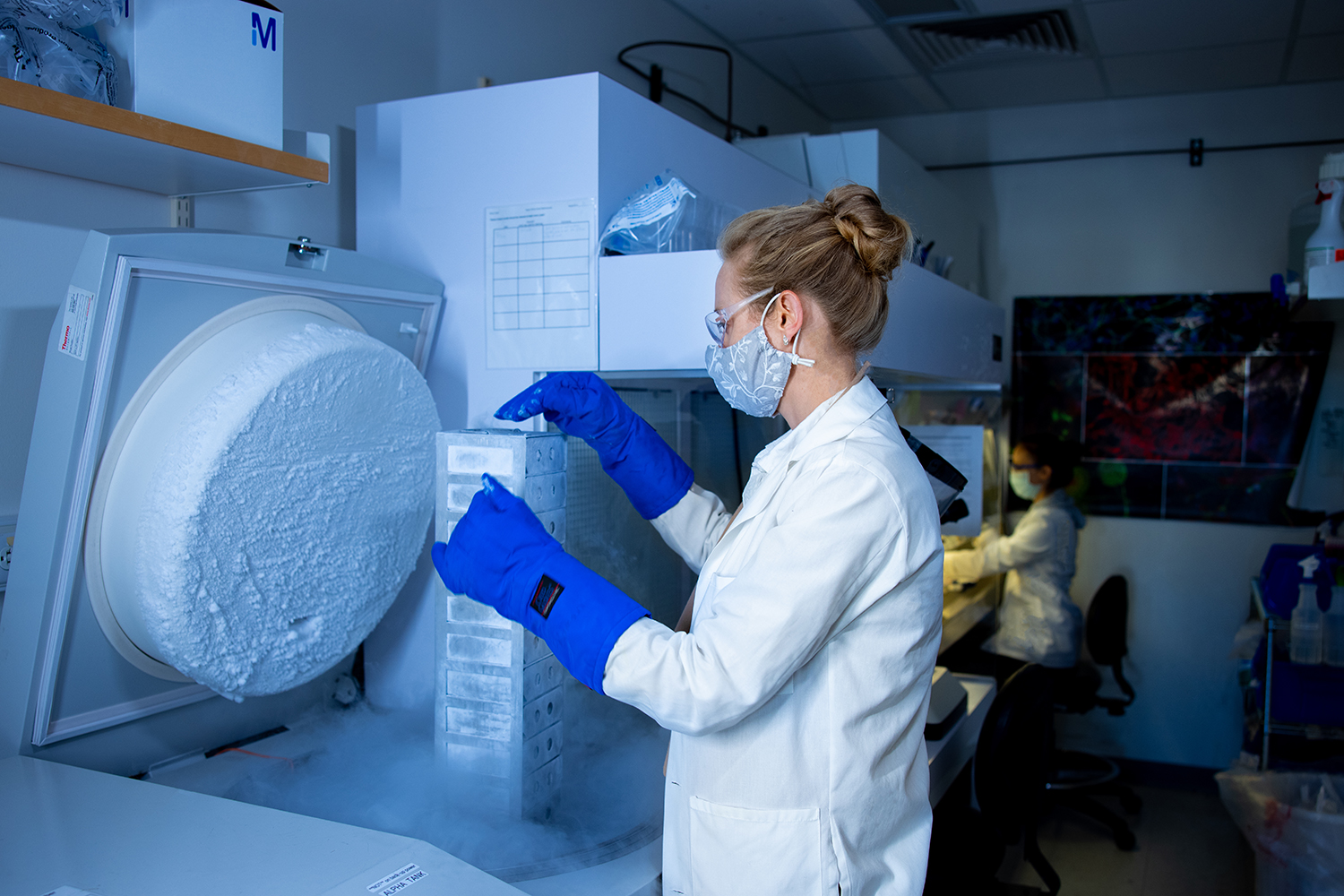The world’s population is aging at record levels, with a corresponding record number of individuals with cognitive decline and dementia. The fact that metabolic conditions, such as obesity, metabolic syndrome, prediabetes, and diabetes, are also at global pandemic levels further exacerbates the problem as they predispose individuals to dementia and cognitive decline. In fact, dementia and cognitive decline are now considered complications of these factors.
With no effective treatments for those suffering from dementia and little hope, it’s critical for more to be done to understand the mechanisms by which these metabolic dysfunctions promote cognitive decline to be able to identify disease-modifying targets and ideal therapeutic windows for obesity- and prediabetes-related cognitive decline during aging.
 Sarah Elzinga, PhD
Sarah Elzinga, PhDEnter Edith Briskin Emerging Scholar Sarah Elzinga, Ph.D., who recently received an NIH Pathway to Independence Award (K99/R00) from the National Institutes of Health to do just that. Specifically, she will explore inflammation as a potential link between cognitive decline and metabolic dysfunction. We sat down with Dr. Elzinga to understand more about her new award and the making of a successful young career in brain health research.
Early Interest in Metabolic Effects and Inflammation:
My love for animals, especially horses, is what initially got me into research. I wanted to make a career out of it.
I have studied metabolic effects and inflammation since my graduate work. My master’s degree looked at nutrition in old and young animals, and an offshoot of this work was the metabolic effects of aging. This got me into my Ph.D., looking at how obesity and metabolic syndrome in horses change immune system responses and affect the ability of the immune system to respond to those threats. I have carried that work over with a narrower focus on the immune system.
My area of interest is understanding inflammation and inflammatory mechanisms that worsen the disease. As you can see, I have always been interested in inflammatory mechanisms, but recently my attention has shifted from the peripheral to the central nervous system. That is how we got to the point of the particular pathway the grant is focused on.
A Primer on Dr. Elzinga’s Research:
The microglia is a type of “scavenger” immune cell in the nervous system that is connected with inflammation, particularly as a primary inflammatory driver in the brain and in Alzheimer’s-related dementia. For those reasons, it serves as an optimal cell type to focus on.

There has already been a lot of research interest in studying the cGAS/STING pathway in the peripheral nervous system (outside of the brain and spinal cord). These studies have identified the release of extra DNA into the cytosol, especially in fat cells of those who are obese or prediabetic, triggering this pathway and the ensuing inflammation.We are also investigating a specific inflammatory pathway called cGAS/STING. It’s an innate inflammatory pathway that searches out extra DNA and other extra organelles in cell cytosol that could clog the system and create an inflammatory response to clear them out. This extra DNA can be released intracellularly for several reasons, but it can often be related to metabolic stress, which comes with obesity, prediabetes, and diabetes.
I want to understand if this also happens in the brain. cGAS/STING is intended to serve the immune system as a defense against viruses and bacteria. So, a healthy brain means that this pathway is there and serves its intended purposes. Recent papers have also found that this pathway is aberrantly or inaccurately active in Alzheimer’s disease and other forms of dementia. Furthermore, we also know that cGAS/STING is most highly expressed in the microglia, although it is expressed in other cell types as well.
The Goal of This Grant:
I am looking to see if some of the same expressions of this pathway in the peripheral body of obese, diabetic, and prediabetic individuals are also happening in the brain and how this relates to cognitive decline.
Specifically, we want to understand if this inflammatory pathway is triggered specific to microglia or whether microglia are responding to this because it is happening in neurons or both. Then finally we want to understand how inflammation then negatively affects cognition.
All this research will happen longitudinally. In other words, we will not be looking at what is happening in these cells at only one point in time but will look at these processes over a series of points in time to understand what, if anything, changes. This has exciting potential.
Thoughts on Having Her Own Lab – the End Goal of the K99:
Directing a lab is definitely intimidating. Being responsible for other people is a big undertaking. That said, it will offer me the opportunity to focus more, work on what I’m most interested in, and divert more of my energy in that direction.

You also gain new perspectives when you move to a different place, which is always a good thing. There is a learning curve to be sure, but I did it when I moved to Michigan State for my master’s, Kentucky for my Ph.D., and now I’m here. So, moving again will be a new challenge, but it will be good to have a change of scenery and I’m lucky that Dr. Feldman is extremely supportive of her past employees, so I anticipate maintaining a good relationship with her.
Other Benefits of Working with Dr. Feldman:
Dr. Feldman is very well-funded, so that gives us the opportunity to have access to a lot of resources that other labs do not. We get to do exploratory work, which is, again, something that many are not able to do. This is not only due to the funding, but Dr. Feldman encourages it as well. In addition, there is much support for the actual research itself, like lab technicians who are able to assist and move the work forward. Dr. Feldman’s experience is invaluable as a mentor.
